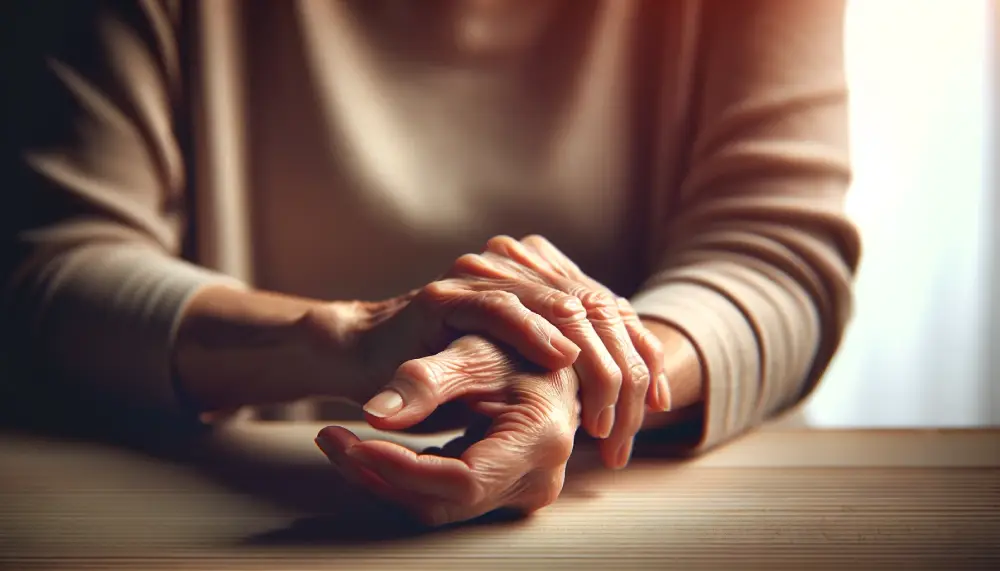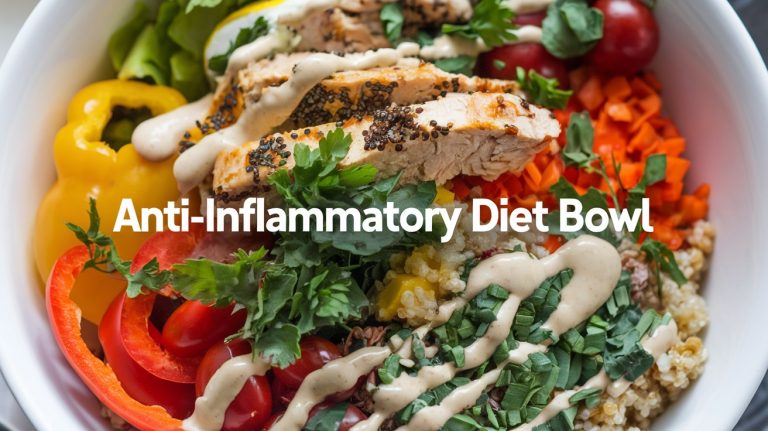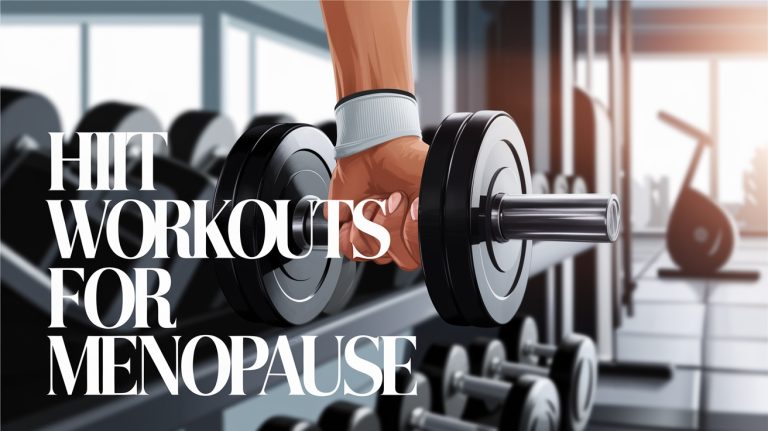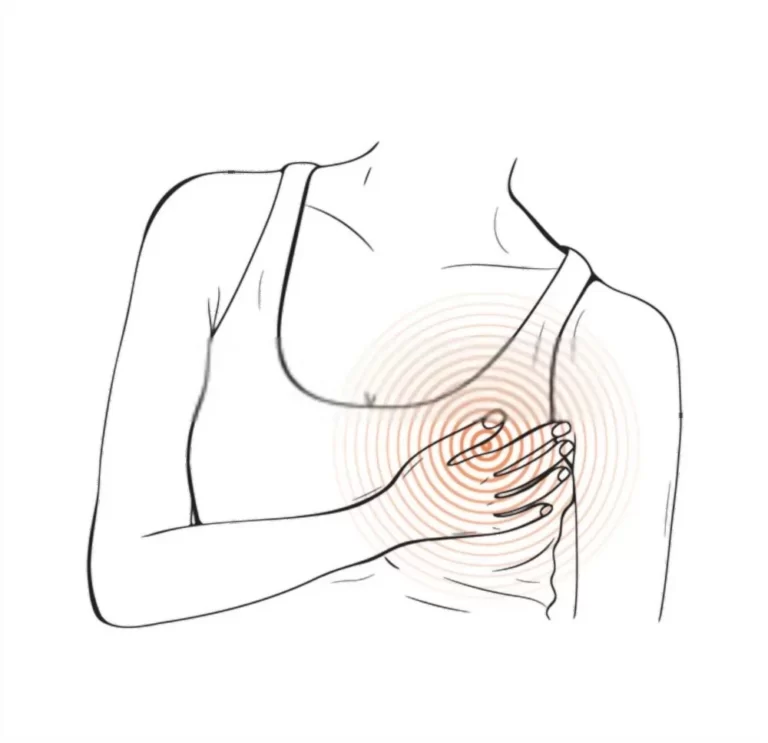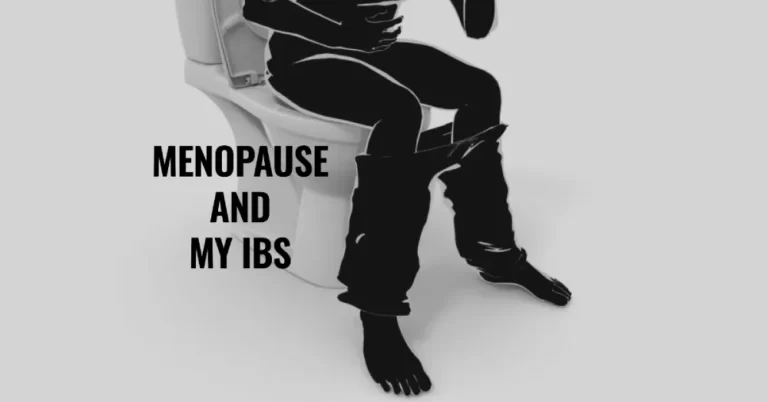Natural Remedies for Joint Pain in Menopause: Nature’s Secrets for Fighting Aching Joints
Certain herbs, turmeric, ginger, and green tea contain antioxidants to protect the body against free radicals that can damage cells and trigger inflammation. Natural supplements like glucosamine and chondroitin can help build cartilage, while omega-3 fatty acids found in fish oil have anti-inflammatory properties.
And some obvious lifestyle changes like Yoga, meditation, and an anti-inflammatory diet routine can help ease joint pain and stiffness due to menopause. It’s like a jigsaw puzzle; all the pieces must fit together to get the whole picture. Natural remedies, supplements, and lifestyle changes are like pieces of the puzzle, and regular exercise is the glue that holds it all together.
Estrogen, an endogenous analgesic that reduces inflammation and pain in the joints and muscles, decreases as we age. It is also associated with sarcopenia, which causes joint strain due to muscle loss.
Believe it or not, menopause amps up the chance of chronic pain by 85%. Yup, over half of us, ladies suffer from “menopausal arthralgia”, the fancy term for throbbing joints.
I know, you’ve heard the usual stuff: exercise, eat well, don’t sit too much. Life is a pain sometimes, but don’t let it stop you.
Nature has gifted us with amazing herbs and remedies that can help ease menopause discomfort. Foods, delicious bites that fight inflammation, and fun workouts promote flexibility and power up your joints.
Imagine a world where nature’s healing powers prevail over pills, offering better health and faster healing, discovering your pain’s roots, and kicking off your wellness journey.
Are you tired of achy joints that won’t quit as you get older? Pain and stiffness everywhere? Sick of popping pills all the time?
Hidden superpowers of some natural remedies for joint pain in menopause can help you get back to your daily activities with ease.
Impact of Hormones on Menopause Arthralgia: Brief about Causes and Occurrences
Menopause arthralgia affects the joints in any part of your body, but most commonly, it starts with the hands, wrists, elbows, shoulders, knees, or feet. These joints are the first to be affected and can create more significant problems if ignored.
The pain may represent stiffness, tenderness, discomfort, and a decreased ability to move. Worse in the morning, the pain may be localized or diffused.
But what causes this? Why do women in menopause experience joint pain?
Inflammation Is the Culprit
Joint pain is not just caused by physical wear and tear over time; inflammation also plays a crucial role. Inflammation is a defensive mechanism in our bodies against foreign objects like viruses, bacteria, or toxic chemicals.
However, sometimes, our immune system goes into overdrive and attacks healthy tissues and organs instead of foreign invaders. This inflammation leads to pain, redness, and swelling in our joints.
Unfortunately, menopause causes a drop in hormone levels that regulate the immune system’s response, leading to an increase in inflammation and joint pain. Estrogen is anti-inflammatory, protects the musculoskeletal system, and helps produce body fluids that lubricate the joints. The decline of estrogen makes cartilage more prone to damage, and friction occurs, resulting in inflammation, stiffness, and pain.
Thus, women around this time have an increased risk of osteoarthritis, especially in the hands, and rheumatoid arthritis. It’s important to note that low estrogen levels can sometimes lead to misdiagnoses, including rheumatoid arthritis, degenerative osteoarthritis, or fibromyalgia.
Moreover, weight gain is another factor contributing to joint pain. As women enter menopause, metabolism slows down, making it easier to gain excess weight. Fat cells release adipokines and cytokines, chemicals that promote inflammation, making it even more intense.
Furthermore, this additional weight puts more pressure on joints, causing discomfort and further aggravating existing conditions like osteoarthritis.
Stress Equals Inflammation
Stress is an inflammation trigger. When stressed, our body releases cortisol, the stress hormone, which increases inflammation levels and leads to achy joints.
With fluctuating hormones and added stressors such as hot flashes and sleep disturbances, menopause makes the body more prone to inflammation.
Your body produces more cortisol, which can lead to weight gain, more cravings, and more belly fat. A stressful situation might make you crave food for comfort, leading to overeating and more weight gain, especially during menopause.
This weight gain, in turn, increases the pressure on your joints. As well, prolonged high levels of cortisol trigger the body’s inflammatory response, resulting in joint pain like a vicious cycle of hormones, inflammation, and pain.
So, what can we do to break this cycle?
Natural Strategies to Counter Menopausal Joint Pain
Dealing with joint pain during menopause can be tricky since not all treatments work for everyone, and some have side effects. Natural methods can help here because they are simple and don’t cause any side effects.
I’ll share some easy, effective ways to reduce menopausal joint pain, including exercise fun facts, relaxation techniques, and soothing herbal remedies.
Stay Active and Beat the Pain
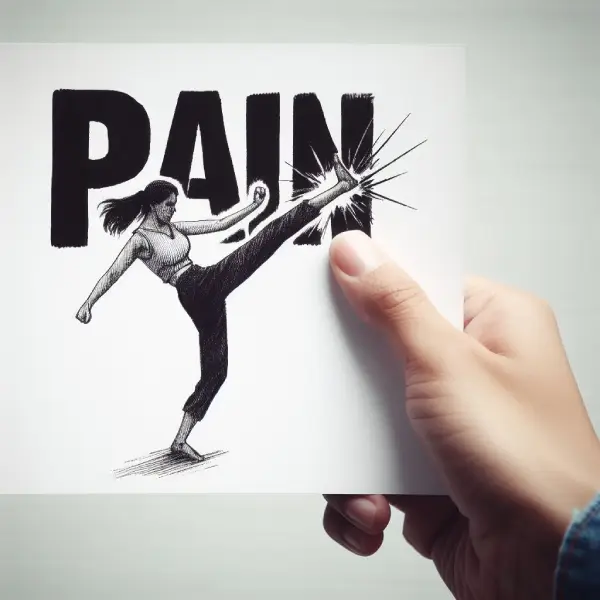
Get movin’ and groovin’, ladies. Regular exercise is necessary, but don’t let it become a snooze-fest or a downer.
We’re talking about more than just staying in shape here, and exercise does wonders for your cardiovascular health, bone density, joint flexibility, and strength.
It helps nourish your joint cartilage and relieves the annoying aches and pains during menopause. By releasing endorphins, your body’s natural painkillers, it minimizes bone loss and osteoporosis. It’s like a double whammy for your bones and your mood.
Exercise can seem like a chore when you’ve got achy joints, but trust me, it’s worth it if you find a routine you like. Studies have shown that active women have fewer joint pains and overall menopausal symptoms compared to couch potatoes.
The key is to find exercises that are low-impact and easy on the joints.
Now, don’t underestimate the power of lifting some weights. You’ll be pleasantly surprised by the super support and strain reduction it provides for your joints.
But if pumping iron isn’t your thing, no worries, walking, dancing, or jogging are all fantastic ways to keep your joints limber and prevent that dreaded midlife stiffness.
And wait, there’s more.
Boost Your Workouts to Stay Fit and Beat Midlife Weight Gain
Exercise can also keep you from gaining weight during menopause. It’s not just about looking good, it’s about feeling good, too. Giving your weight-bearing joints a break can make a world of difference.
Starting a comprehensive exercise routine can do wonders for your menopausal symptoms. Mix moderate and vigorous exercises to achieve your fitness goals and reduce stress and anxiety.
What exercises should you focus on?
Aerobic exercises like swimming, brisk walking, biking, and running are great for burning calories and building muscle mass. Resistance or strength training is also important to improve your overall strength and fitness level.
If you want quick results and save time, consider high-intensity interval training (HIIT). It involves alternating short, intense bursts of exercise with rest periods or low-intensity exercise. HIIT can improve your cardiovascular health, boost your metabolism, and burn more calories. Plus, you can do it anywhere and easily customize it to your fitness level.
The Centers for Disease Control and Prevention (CDC) recommends at least 150 minutes of moderate-intensity aerobic exercise per week for adults. Include some muscle-strengthening exercises too.
Adding variety to your routine is important to keep you motivated and avoid boredom. Consider activities like yoga, Tai Chi, Pilates, dance, or group fitness classes. These can be fun and challenging, and they’re great for mixing things up.
Remember to listen to your body and start slowly. Gradually increase intensity as you build your fitness level. If you need personalized guidance, it can be helpful to consult a certified fitness trainer or medical professional.
Relaxation Techniques for a Happier Menopause
Stress can worsen menopause symptoms, including joint pain. Therefore, it’s important to find ways to relax and reduce stress during this time.
Relaxing techniques such as deep breathing, meditation, or yoga can help calm the mind and body. These techniques promote mindfulness and reduce stress hormones, thus decreasing inflammation in the body.
Yoga is a great option for women experiencing menopause-related joint pain. It combines physical movements with mindfulness and breathing techniques, promoting relaxation while improving strength and flexibility. The gentle stretches and poses can specifically target areas of discomfort, making it a valuable tool against joint pain.
Since everyone is different, trying different ways to relax and see what works best is a good idea. Be it Cognitive Behavioral Therapy (CBT), simple breathing exercises, indulging in a good read, or getting lost in the soothing rhythms of calming music, finding your oasis of tranquility can make a world of difference.
Soothing Menopausal Joint Pain Through Diet and Hydration
Menopause can be tough, huh? It’s like your body’s on a roller coaster you didn’t ask for, especially when joint pain joins the ride. But changing your diet and staying hydrated can bring obvious comfort.
An Anti-inflammatory Diet Plan: Delicious Bites for Happy Joints
What you eat can either help or worsen your joint pain. The key here is to include plenty of foods with potent anti-inflammatory properties.
Think of your plate as a colorful canvas of healing. Load it up with fruits, veggies, and lean proteins.
These aren’t just tasty; they’re rich in antioxidants that protect against cell damage and, like natural warriors, fight off the inflammation causing all that joint ache. Whole grains like brown rice, quinoa, whole wheat bread, and oats contain fiber that helps reduce inflammation.
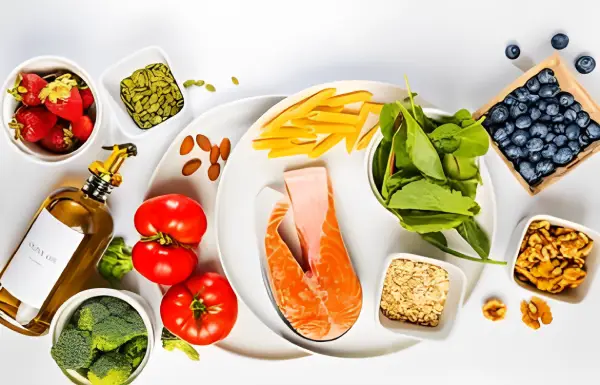
Whole, unprocessed foods are your body’s best friends. They keep things balanced and nourishing. And, of course, a little dark chocolate now and then doesn’t just taste great; it’s also heart-healthy and can lift your spirits.
Portion control and mindful eating are like secret ingredients to feeling better. Enjoy every bite and listen to your body. Calming herbal teas can also help ease your mind and improve your sleep, which can make a difference in how you feel.
Remember, everyone’s different, and there’s no one-size-fits-all. If you feel overwhelmed, chat with a nutritionist or dietitian about your concerns. They can help tailor a plan that’s just right for you.
Foods to Avoid:
- Processed foods with high amounts of sugar and unhealthy fats can increase inflammation.
- Red meat contains a type of fat called arachidonic acid that promotes inflammation. Limit consumption to lean cuts and opt for plant-based protein sources instead.
- Dairy products may trigger inflammation in some individuals. Consider limiting or avoiding dairy if you experience joint pain during menopause.
- Refined carbohydrates like white bread, pasta, and pastries can cause a spike in blood sugar levels, leading to inflammation.
- Avoid sugary drinks and excessive caffeine, which can dehydrate the body.
- Alcohol may also worsen joint pain, so it’s best to limit consumption or avoid it altogether.
So, pay attention to how your body reacts to certain foods and adjust accordingly.
Water is Your Best Friend: Stay Hydrated for Healthy Joints
Menopause can cause hormonal changes that lead to dehydration, like hot flashes and night sweats. Your body needs estrogen to stay hydrated, so it’s important to make an extra effort as it decreases.
Water is a lubricant, keeping your joints well-oiled and preventing friction between bones. It also helps flush out toxins, reducing inflammation in the body.
A sip here and a gulp there can keep those joints happy and less painful. It’s simple, but it works wonders. If you struggle with plain water, try adding some flavor with fruits or herbs, or opt for hydrating foods like watermelon, cucumbers, and lettuce.
Phytoestrogens
Ever heard of these? They’re in soy and flaxseed and act like your body’s own estrogen.
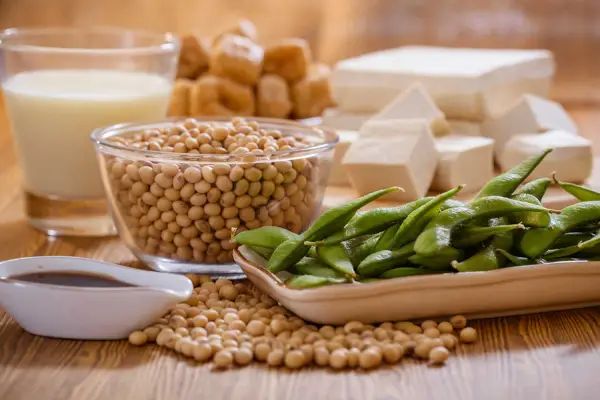
Including these in your meals can help balance things out and ease some of that joint discomfort. Plant-based foods like soybeans, soy milk, tofu, tempeh, and edamame are packed with phytoestrogens. Add them to stir-fries, salads, or smoothies for a tasty and nutritious boost.
Soybeans contain genistein, an isoflavone that can reduce inflammation and protect against bone loss. Flaxseed, rich in lignans, can help increase estrogen levels and improve joint pain.
Plant-based phytoestrogens can replace synthetic estrogen in hormone replacement therapy. Sprinkle some ground flaxseed on your yogurt or toss soybeans into a stir-fry for added relief.
Healthy Fat
Foods like salmon and walnuts aren’t just delicious; they’re packed with omega-3 fatty acids that help calm inflammation. They’re like a cozy, soothing blanket for your aching joints.
Flaxseed, chia seeds, and avocados are also great sources of omega-3s. Aim to incorporate these foods into your meals at least a few times a week for maximum benefits.
Green Veggies: Your Allies
Broccoli and kale are more than just greens; they’re your allies in this menopause journey. They tackle inflammation, making them essential in your daily diet.
Plus, they’re also rich in calcium, which is crucial for maintaining strong bones. Don’t just stuck with boring salads, get creative with these veggies in soups, stir-fries, and smoothies.
Herbal and Natural Supplements:
While there’s no magic cure for menopausal arthralgia, certain herbal and natural supplements could offer some much-needed help. It’s worth giving your body a helping hand with these supplements.
Supplements help fill in the micronutrient gaps in your diet.
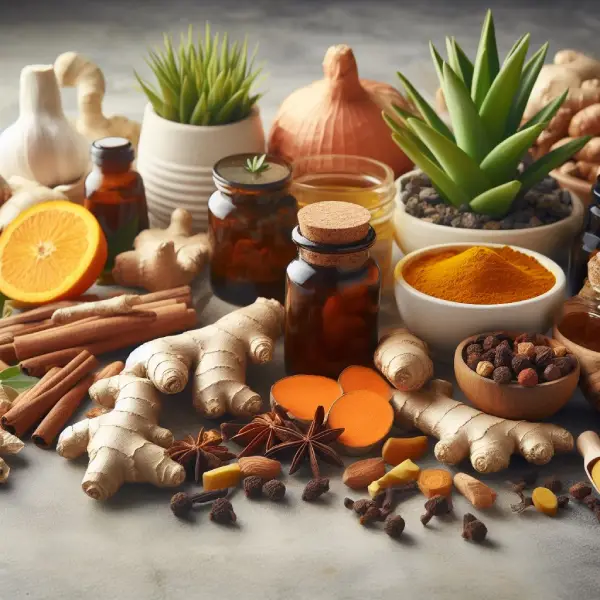
Chondroitin and Glucosamine
Think of the cartilage in your joints as a cushion that keeps your movements smooth. Sadly, this cushion can wear down over time, especially during menopause.
Research shows that chondroitin and glucosamine supplements can help reduce joint pain and stiffness during menopause. These two work together to support cartilage health and may have anti-inflammatory effects.
Glucosamine, a natural compound in your body, helps form and repair cartilage. Chondroitin, on the other hand, is a structural component of cartilage that helps retain water and nutrients in your joints. Together, they pack a powerful punch against menopausal joint pain.
These fantastic compounds are especially effective at tackling osteoarthritis, a common issue during menopause. It’s proven that they relieve joint pain and improve flexibility, too. Chondroitin also reduces inflammation and protects your joints from further damage.
If you’re thinking about incorporating Chondroitin and Glucosamine into your daily routine, you’ll often find them combined with other joint-friendly ingredients like MSM, turmeric, and collagen in supplements. This powerful combination takes a comprehensive approach to joint health, addressing pain, inflammation, and wear and tear all at once.
Turmeric: Nature’s Golden Anti-inflammatory Remedy
Turmeric is known for its powerful anti-inflammatory properties, making it an excellent natural treatment for various ailments, including arthritis, gout, and joint pain. This spice has been used for thousands of years, both as a food and as a medicinal herb.
Its importance has been recognized by modern medicine, with over 3000 studies published in the last 25 years alone. Turmeric’s antioxidant properties and potential to support a healthy inflammatory response have caught the attention of the health community.
Curcumin is the active compound in turmeric that provides its benefits. It is a powerful polyphenol, which is a plant-based antioxidant that plays a role in preventing degenerative conditions.
Its magical anti-inflammatory properties are like a superhero for your joints. It disrupts the production of cytokines, chemicals that cause inflammation, and triggers the release of endorphins, natural painkillers produced by the body, helping balance mood swings, hot flashes, and night sweats.
Here’s a tip: Combine turmeric with black pepper. This combination increases the effectiveness of turmeric, making it easier for your body to absorb.
A Simple Golden Turmeric Shot Recipe:
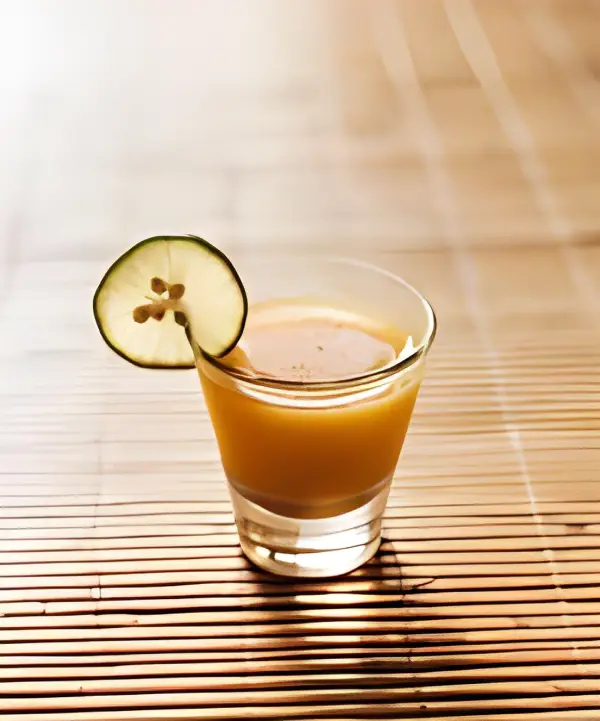
1. Take a small piece of fresh turmeric root or 1 tsp of turmeric powder.
2. Add a pinch of freshly ground black pepper.
3. Blend the turmeric with water to create a smooth mix.
4. Stir in the black pepper.
Enjoy this golden shot each morning. It’s not only a healthy start to your day but also a reminder of the power of natural remedies in our everyday lives.
Golden Milk Recipe:
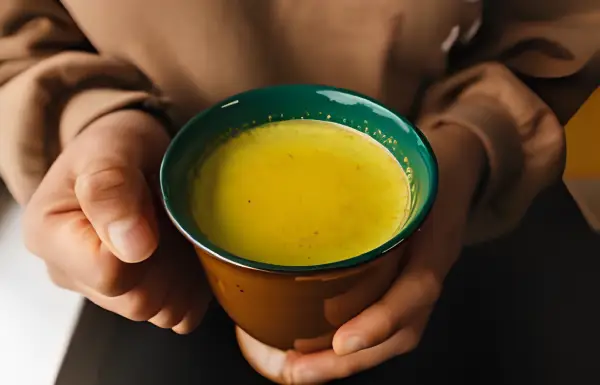
1. Warm a cup of milk (dairy or plant-based).
2. Stir in 1 tsp of turmeric powder and a pinch of black pepper.
3. Sweeten with some honey or maple syrup if you like.
4. Enjoy this comforting drink, especially before bedtime, for a soothing effect.
You will definitely fall in love with this golden delight. This golden milk is perfect for those who prefer a soothing, warm drink.
It combines all the benefits of turmeric in a delightful, comforting beverage. Drink this regularly and feel the difference in your joint pain during menopause.
Ginger and Green Tea
These two soothing and beneficial ingredients are known for their anti-inflammatory and antioxidant properties. They can bring comfort and tranquility, relieving aches and promoting overall wellness.
Ginger is a natural pain reliever, easing joint stiffness and muscle pain. It also fights against inflammation by eliminating harmful free radicals in the body.
Meanwhile, green tea contains catechins, powerful antioxidants that protect your cartilage and reduce joint inflammation. Additionally, it’s a perfect alternative to sugary and caffeinated beverages, which can worsen menopausal symptoms.
Make ginger and green tea part of your daily routine, whether a warm cup or a refreshing iced beverage. Experience their magic and bring peace to your body.
Ashwagandha: The Adaptogen for Joint Inflammation.
This ancient herb, often called the “stress reliever,” has been used in traditional Indian medicine for centuries. Ashwagandha is known as an adaptogen, which means it helps our body adapt to stress, both mental and physical.
Regarding joint health, Ashwagandha’s magic lies in its ability to combat inflammation. Inflammation can be a major culprit behind those aches and stiffness you feel in your joints. By addressing this root cause, Ashwagandha offers a natural way to bring much-needed relief.
You can consider incorporating Ashwagandha into your routine through capsules, teas, or powders. It’s best to consult a healthcare professional before starting Ashwagandha, especially if you take any medications or have underlying health conditions.
Vitamins and Minerals:
Vitamin D:
Often dubbed the “sunshine vitamin”, Vitamin D is primarily absorbed by our bodies from sun exposure. It’s not just a bone booster; this magical nutrient has a significant role in joint health, too.
Vitamin D is crucial in calcium absorption in our guts and is essential for maintaining strong and healthy bones. Strong bones mean reduced risks of joint issues. But beyond bones, Vitamin D also has properties that help combat inflammation, a key culprit behind joint pain during menopause.
Low Vitamin D levels have been linked to chronic pain, especially in the joints. This makes ensuring you get enough of this essential nutrient crucial during menopause, a phase where joint pain is quite common.
And, as we age, our skin’s efficiency in producing Vitamin D diminishes. Plus, with our modern lifestyles, we often spend more time indoors, reducing our sun exposure.
So, this is where supplements or diet adjustments might come in handy. Foods like fatty fish, fortified milk, and egg yolks are all rich in Vitamin D.
It’s always wise to get your Vitamin D levels checked. Your doctor can recommend if you need supplements and in what dosage. And on days when the sun is shining bright, take a little stroll outdoors.
Vitamin K:
Often overshadowed by its more famous counterparts, Vitamin K is the unsung hero in joint health. It plays a great role in bone mineralization, ensuring that calcium, the building block of bones, is sent to where it’s needed most – in the bones and not the arteries.
This process is essential in preventing osteoarthritis and maintaining robust joint health. Leafy greens like kale, spinach, and broccoli contain Vitamin K.
Vitamin B:
When you think of B vitamins, you might not instantly associate them with joint health. But they’re the backstage workers who support and set the stage for optimal joint function.
The family of B vitamins, especially B6 and B12, are critical in regulating inflammation in the body. Chronic inflammation is often a precursor to joint discomfort.
Moreover, B vitamins are vital for energy production, which is essential as joint pain can sometimes drain your energy levels. To keep your joints dancing with joy, indulge in foods like whole grains, eggs, beans, and lean meats, all rich sources of B vitamins.
Magnesium:
Magnesium is often referred to as the “relaxation mineral.” Why?
Because it plays a crucial role in muscle relaxation. When muscles are relaxed, there’s less tension on the joints, making movements smoother and less painful.
If you’ve ever suffered from muscle cramps or spasms, that’s often your body whispering that it could use some more magnesium. Foods like dark leafy greens, nuts, seeds, and whole grains are excellent sources to stock up on.
Calcium:
Ask anyone about strong bones, and the instant reply will be ‘Calcium.’ Calcium ensures our bones are robust and less prone to breakages and wear, thereby indirectly protecting our joints.
Plus, your muscles also need calcium for proper contraction. Dairy products like milk and cheese, fortified plant-based milk, leafy greens, and fish with bones (like sardines) are fantastic calcium sources.
Fish Oil Supplements
Fish oil supplements are sourced from the fatty tissues of cold-water oily fish, like salmon, mackerel, and sardines. They contain omega-3 fatty acids, specifically EPA (eicosapentaenoic acid) and DHA (docosahexaenoic acid). These acids are renowned for their anti-inflammatory properties.
Why is this crucial during menopause? Joint pain is often aggravated by inflammation. By tackling inflammation, you’re not just soothing your joints but potentially preventing other inflammation-driven issues.
But there’s more to fish oil than just joint relief. The benefits of omega-3s extend to the heart. Many studies have shown that fish oil can reduce triglycerides, stabilize your heartbeat, make platelets “less sticky,” and can even lower blood pressure slightly. All these factors contribute to heart health, which becomes even more critical as we age, particularly during menopause when hormonal changes can impact heart health.
But, a word of caution: as with all supplements, it’s not about blindly diving in. Fish oil supplements can interact with medications, especially those affecting blood clotting. Plus, they might not be suitable for everyone. For instance, some people can experience gastrointestinal discomfort or a fishy aftertaste.
Probiotics
Probiotics are good bacteria that promote a healthy gut microbiome. They can also help fight inflammation in the body. Yogurt, kimchi, sauerkraut, and kefir are all rich in probiotics.
Include these in your meals for a gut-friendly and joint-loving diet. Discuss with your GP if you’re considering probiotic supplements, as they can recommend what’s best for you.
Herbal Ointments
When joint pains strike, sometimes you need immediate comfort. You can get herbal ointments for that.
Think of them as a caring touch that soothes those sore spots. These gentle ointments, derived from nature’s bountiful herbs, provide immediate relief and soothe painful areas.
Ingredients like arnica, eucalyptus, and camphor have anti-inflammatory and pain-relieving properties, making them ideal for soothing joint pain. By massaging the ointment into affected areas, you not only benefit from the therapeutic qualities of the herbs but also promote healing through increased blood flow. The best part is these herbal ointments are simple and free from harsh chemicals.
However, it’s always a good idea to do a patch test or consult a dermatologist, especially if you have sensitive skin.
Here is a quick recipe:
Golden Milk Ointment:
- Melt 4 tbsp of coconut oil in a double boiler.
- Add 1 tsp of turmeric powder, 1 tsp of ginger powder, and a pinch of black pepper.
- Stir until well combined and remove from heat.
- Allow the mixture to cool down and solidify before applying to affected areas.
- Store in a clean jar and use as needed.
You can add a few drops of essential oils like peppermint or lavender for therapeutic benefits.
Cinnamon
This aromatic spice does more than just add a delightful taste to our favorite treats. Packed with antioxidants and anti-inflammatory properties, cinnamon has been hailed for its therapeutic benefits for centuries. Regarding joint discomfort, cinnamon may provide a gentle and soothing touch.
Garlic
Think of garlic as nature’s little warrior. Behind its pungent aroma lies a treasure trove of health benefits.
Rich in allicin, garlic boasts powerful anti-inflammatory and antioxidant properties. Traditionally used to boost the immune system and ward off colds, garlic may also alleviate joint pains. Nature has truly created its pharmacy within these tiny cloves.
Primrose Oil
Extracted from evening primrose seeds, this oil is like a soothing lullaby for discomfort. Packed with gamma-linolenic acid (GLA), an essential fatty acid, primrose oil can relieve joint pain and skin issues. Women of all ages have also turned to it for relief from menstrual and menopausal symptoms.
Devil’s Claw
Despite its menacing name, Devil’s Claw is a blessing for those seeking relief from joint pain and inflammation. Native to the African desert, this plant has been traditionally used for its anti-inflammatory properties, thanks to the compound harpagoside in its roots.
Beyond joint health, it’s also known to aid digestion. However, as with all remedies, it’s wise to consult a healthcare professional before use, as it may not suit everyone or could interact with certain medications.
A Few Quick Practical Lifestyle Tips
Nourish & Balance: Embrace anti-inflammatory foods; maintain a healthy weight.
Supplement Wisely: Incorporate Omega-3s, vitamins D and K, and magnesium for joint support.
Hydrate Often: Increase water intake for hydration and joint lubrication.
Move Regularly: Set reminders for stretching, walking, and regular activity.
Work Smart: Utilize standing desks to reduce joint pressure.
Medication Mindfulness: Seek medical advice before using over-the-counter pain relievers.
Yoga for Mobility: Incorporate yoga for improved flexibility and joint health.
Stress Less: Practice meditation and mindfulness for mental and joint well-being.
Heal with Flavor: Create recipes rich in anti-inflammatory ingredients like turmeric and ginger.
Poses for Relief: Use specific yoga poses like Child’s Pose and Cobra to soothe joints.
Thermal Therapy: Alternate between heat and cold treatments for pain relief.
Relaxation Routines: Enjoy the benefits of massage and aromatherapy for muscle and mind relaxation.
Smile and Soothe Your Menopausal Aches Away
If menopause stirs up a storm of joint aches, let’s turn to Mother Nature’s pantry for some relief. Start your day with turmeric tea, nature’s anti-inflammatory. Spice it up with ginger for extra zing and antioxidants.
Move a little, too. A gentle yoga practice can relax you and stretch out stiffness. It’s like whispering to your body, “We’re in this together.”
Take a moment each day for deep breaths – a mini-vacation for your mind to shoo away stress. And when the sun peeks out, step into its glow. That sunshine Vitamin is a natural pick-me-up for both bones and mood.
So, how about we blend tasty, joint-loving recipes with soothing yoga and a dash of sunshine? Your menopause journey might feel lighter.

